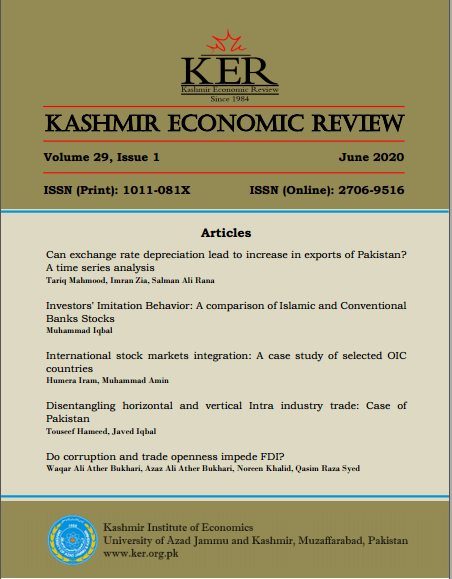Can Exchange Rate Depreciation Lead to Increase in Exports of Pakistan? A Time Series Analysis
Main Article Content
Abstract
In this analysis, it is argued that Pakistan had passed through
different exchange rate regimes in the last two decades. This study
empirically analyses the impact of exchange rate fluctuations on
Pakistan’s exports. A monthly time series data of Export Volume,
Import Volume, Real Effective Exchange Rate, Average Applied
Tariff Rates for Pakistan, and major trading partners gross
domestic product (GDP) has been taken for 2003-04 to 2018-19.
Data for the first six months of 2019-20 has also been included in
the analysis, as it was the period that witnessed substantial
exchange rate depreciation. Ordinary Least Square (OLS)
technique has been applied to check the time-series impact
between Export Volume and Real Effective Exchange Rate and
weighted average exchange rate. On co-integrated series, the Error
Correction Model (ECM) has been used to find out the long-run
and short-run relationships among variables of the same period.
The results show that there is a positive, but less significant, impact
of currency variations on Pakistan’s exports, however, there is an
inverse nevertheless significant impact of applied average tariff
rates on Pakistan’s exports. Furthermore, there is a positive
correlation between the increase in exports and the weighted GDP
of its trading partners (which creates exportable surplus due to
industrial growth).
Article Details

This work is licensed under a Creative Commons Attribution-ShareAlike 4.0 International License.

